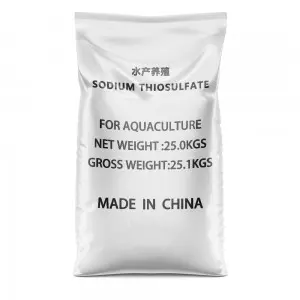



Enhancing Biocompatibility of Polyacrylamide for Biomedical Applications and Tissue Engineering
Biocompatibility of Polyacrylamide An Overview
Polyacrylamide (PAM) is a synthetic polymer widely used in various applications, including water treatment, agriculture, and biomedical fields. In recent years, its biocompatibility has attracted significant attention, particularly in tissue engineering, drug delivery systems, and as a support medium for cell culture. Understanding the biocompatibility of polyacrylamide is crucial for its successful application in biological systems, ensuring safety and efficacy.
Chemical and Physical Properties of Polyacrylamide
Polyacrylamide is formed through the polymerization of acrylamide monomers, which can result in either linear or crosslinked structures, depending on the application. Its properties, such as flexibility, mechanical strength, and controllable porosity, make it suitable for various biomedical applications. The degree of crosslinking and the molecular weight of PAM influence its water absorption capacity, degradation rate, and overall biocompatibility. Moreover, the polymer is generally stable under physiological conditions, contributing to its widespread use in biological settings.
Biocompatibility Assessment
The biocompatibility of polyacrylamide encompasses its interaction with biological tissues and its overall effects on cellular functions. Several studies have employed in vitro and in vivo models to evaluate PAM's biocompatibility. In vitro assessments typically include cytotoxicity tests, such as the MTT assay, where cell viability is measured after exposure to PAM. Results from these assays have shown that polyacrylamide, especially in its crosslinked form, exhibits low cytotoxicity, making it a favorable candidate for biomedical applications.
polyacrylamide biocompatibility

In vivo studies further support PAM's biocompatibility, demonstrating low inflammatory responses and minimal adverse effects when implanted in animal models. These studies often examine the host response through histological evaluations, which assess inflammation, tissue integration, and foreign body reactions. The findings indicate that polyacrylamide can be well tolerated in living organisms, underscoring its potential for use in medical devices and tissue scaffolds.
Applications in Tissue Engineering
Due to its favorable biocompatibility, polyacrylamide is increasingly being utilized in tissue engineering. Its ability to form hydrogels provides a suitable environment for cell growth and tissue regeneration. Hydrogels made from PAM can be engineered to mimic the extracellular matrix, promoting cell adhesion, proliferation, and differentiation. This characteristic is essential for developing scaffolds that facilitate tissue repair and regeneration in applications such as wound healing, cartilage repair, and bone regeneration.
Moreover, polyacrylamide can be functionalized with various biomolecules to enhance its biological performance, such as the incorporation of growth factors or adhesion peptides. These modifications can further improve its efficacy in supporting cell survival and function, paving the way for innovative therapies in regenerative medicine.
Conclusion
In summary, polyacrylamide stands out as a versatile and biocompatible material suited for various biomedical applications. Its chemical properties, coupled with extensive research demonstrating its low cytotoxicity and minimal inflammatory response, make it a promising candidate for future developments in the fields of tissue engineering and drug delivery. Ongoing research into optimizing its properties and functionalization will likely expand the potential uses of polyacrylamide in clinical settings, contributing to advances in biomedicine and improving patient outcomes. As technology progresses, the full potential of polyacrylamide in enhancing human health and addressing medical challenges is yet to be realized.
-
Why Sodium Persulfate Is Everywhere NowNewsJul.07,2025
-
Why Polyacrylamide Is in High DemandNewsJul.07,2025
-
Understanding Paint Chemicals and Their ApplicationsNewsJul.07,2025
-
Smart Use Of Mining ChemicalsNewsJul.07,2025
-
Practical Uses of Potassium MonopersulfateNewsJul.07,2025
-
Agrochemicals In Real FarmingNewsJul.07,2025
-
Sodium Chlorite Hot UsesNewsJul.01,2025










